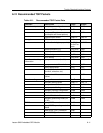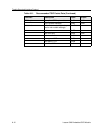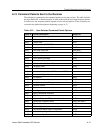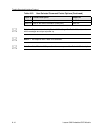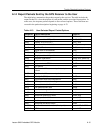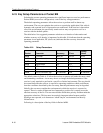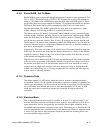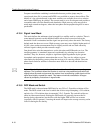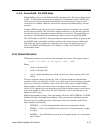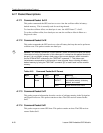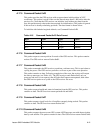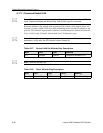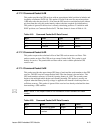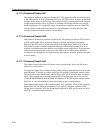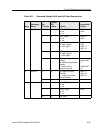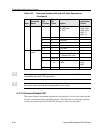
Lassen-SK8 Embedded GPS Module A-19
Trimble Standard Interface Protocol
A.15.6 Packet 0xBB - Set DGPS Mode
Packet 0xBB is used to set the differential GPS operating mode. The factory default mode
is OFF. If differential corrections are available, the recommended mode is DGPS Auto.
In this mode, the receiver computes differentially corrected positions whenever valid
corrections are available. Otherwise, the receiver computes non-differentially corrected
positions.
In manual DGPS mode, the receiver only computes solutions if corrections are available
for the selected satellites. This is the most accurate mode but it is also the most selective,
since the fix density is dependent on the availability of corrections. The applicability of
corrections is determined by the maximum age which can be set using Packet 0xBB.
The AUTO mode avoids the fix density problem but opens the possibility of going in and
out of DGPS mode, potentially resulting in position and velocity jumps. In differential
OFF mode, the receiver will not use corrections even if they are valid. If accuracy is
critical, use MANUAL DGPS mode. If fix density is critical, AUTO DGPS is the
recommended mode.
A.16 Packet Structure
TSIP packet structure is the same for both commands and reports. The packet format is:
<DLE> <id> <data string bytes> <DLE> <ETX>
Where:
• <DLE> is the byte 0x10
• <ETX> is the byte 0x03
• <id> is a packet identifier byte, which can have any value excepting <ETX> and
<DLE>.
The bytes in the data string can have any value. To prevent confusion with the frame
sequences <DLE> <id> and <DLE> <ETX>, every <DLE> byte in the data string is preceded
by an extra <DLE> byte ('stuffing'). These extra <DLE> bytes must be added ('stuffed')
before sending a packet and removed after receiving the packet. Notice that a simple
<DLE> <ETX> sequence does not necessarily signify the end of the packet, as these can be
bytes in the middle of a data string. The end of a packet is <ETX> preceded by an odd
number of <DLE> bytes.
Multiple-byte numbers (integer, float, and double) follow the ANSI / IEEE Std. 754 IEEE
Standard for binary Floating-Point Arithmetic. They are sent most-significant byte first.
This may involve switching the order of the bytes as they are normally stored in Intel
based machines. Specifically:
• INTEGER — A 16 bit unsigned number sent in two's complement format.
• SINGLE — Float, or 4 byte REAL has a precision of 24 significant bits, roughly
6.5 digits.
• DOUBLE — 8 byte REAL has a precision of 52 significant bits. It is a little better
than 15 digits.



